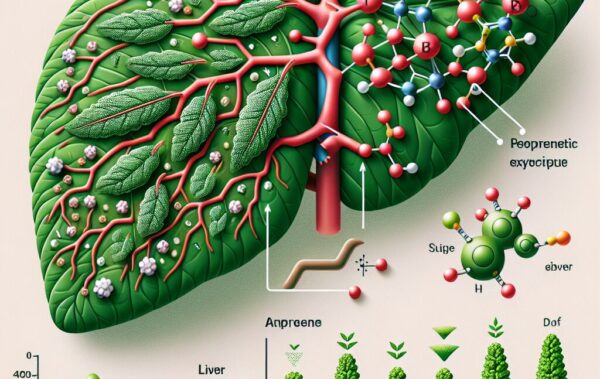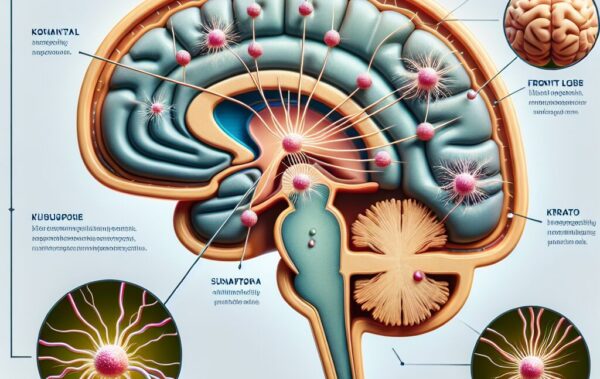- Overview of Kratom and its psychoactive effects
- Nicotine: Mechanisms of stimulation and dependency
- Comparative analysis of kratom and nicotine experiences
- Potential health implications and safety concerns
- Frequently Asked Questions about kratom and nicotine use
Kratom is a tropical tree native to Southeast Asia, with leaves that have been used for centuries due to their psychoactive effects. The leaves of the Kratom tree contain compounds called alkaloids, with mitragynine and 7-hydroxymitragynine being the most prominent. These substances can induce a range of experiences in users, from mild stimulation to sedation, depending on the dosage and the specific strain of Kratom consumed. Indeed, various strains such as Maeng Da and Bali are often categorized by their unique effect profiles, which can be energizing or relaxing.
At lower doses, Kratom typically produces stimulant-like effects. Users often report increased energy, enhanced alertness, and a more sociable demeanor. This occurs because Kratom alkaloids can stimulate the release of certain neurotransmitters that lead to these stimulating sensations. It is these effects that are sometimes compared to the stimulation provided by caffeine or nicotine.
However, as the dosage increases, the effects of Kratom can shift dramatically. Higher amounts of Kratom can lead to sedation, pain relief, and an opioid-like effect on the body. This can include sensations of euphoria, calm, and a decreased sensitivity to physical and emotional pain. It’s important to note that while some use Kratom to relieve symptoms of certain conditions, it is not officially recognized as a medical treatment in many parts of the world.
Kratom use does have its controversies. Just like any psychoactive substance, Kratom has the potential to become habit-forming if used inappropriately. Responsible users often educate themselves about proper dosage, the different strains available, and their individual effects to mitigate the risks associated with its use. Accessing quality products from reputable sources like a dedicated Kratom shop can also play a significant role in ensuring a safe and controlled experience.
The user experiences with Kratom can vary widely, with factors such as individual body chemistry, the format of Kratom consumed—whether it be powder, capsules, or edibles—and of course, the specific strain, all influencing the effects. Users often share their experiences on forums and blogs, discussing the subtleties between different modes of consumption and the various sensations they elicit. This peer-to-peer knowledge sharing is crucial in the Kratom community, where anecdotal reports often guide new users.
It is the psychoactive properties of Kratom that lend itself to comparison with other stimulants, most notably nicotine. Both are plant-derived substances, and both have a history of both traditional and recreational use. However, they diverge significantly in terms of their chemical composition, mechanisms of action within the body, and the breadth of their effects. In the next sections, we’ll explore nicotine’s stimulation and dependency mechanisms and delve into a comparative analysis of the experiences associated with both of these powerful substances.
Nicotine: Mechanisms of stimulation and dependency
Nicotine is a powerful psychoactive substance found in tobacco products and is one of the most heavily used addictive substances on earth. In essence, nicotine alters the brain chemistry to create a mix of stimulating and pleasurable sensations. The process starts when nicotine enters the bloodstream, typically through inhalation when smoking cigarettes, using a vape, or other forms of tobacco consumption. Once in the bloodstream, nicotine is transported rapidly to the brain, where it binds to nicotinic acetylcholine receptors. This causes the release of several neurotransmitters, including dopamine, norepinephrine, and acetylcholine, which lead to increased alertness, reduced appetite, and an overall sense of well-being.
The central nervous system stimulation that nicotine provides is often the reason many users report feeling more focused and mentally alert. Dopamine, the neurotransmitter most commonly associated with pleasure and reward, is particularly influential in the context of nicotine use. It underlies the development of addiction, reinforcing the habit-forming behaviors associated with smoking or other tobacco use. The charm and the challenge with nicotine are that it provides a quick-acting effect. User experiences often describe the rapid onset of stimulation and a relatively short-lived peak, which can lead to frequent use to maintain the pleasurable effects or stave off withdrawal symptoms.
Dependency on nicotine involves both psychological and physiological aspects. The psychological dependency is tied to the behavior and rituals associated with nicotine use, while the physiological dependency is driven by the biochemical interactions in the body. When nicotine use is stopped, withdrawal symptoms such as irritability, anxiety, depression, and an increase in appetite can occur. This enforces the addictive potential of nicotine, as users often continue its use to avoid these unpleasant feelings.
Nicotine’s potency as an addictive substance is not just anecdotal; it is well-documented in research literature. Studies highlight how nicotine can be as addictive as heroin, cocaine, or alcohol. This is largely due to its chemical nature and how it rewires the brain to crave repeated stimulation. Despite the stimulant effects that nicotine provides, the negative health implications of its long-term use are undeniable, including increased risks of cardiovascular disease, lung cancer, and a plethora of other health issues.
It’s crucial for individuals interested in exploring the effects of stimulants to fully understand the nature of the substances they’re engaging with. While nicotine provides a well-known model of stimulation and addiction, exploring alternatives like Kratom must be done with a clear awareness of both benefits and potential risks. With this context, users can make educated decisions and exercise appropriate caution when navigating the stimulating experiences these substances offer.
Comparative analysis of kratom and nicotine experiences
When comparing the stimulating experiences of Kratom and nicotine, it’s important to recognize the distinct pathways through which each exerts its influence. User experiences suggest that while both substances can offer a sense of increased energy and alertness, the nature of the stimulation is quite different.
Kratom’s stimulant effects are usually presented as more diverse and dosage-dependent. At lower doses, as stated earlier, users may feel an energy boost and cognitive clarity akin to the effects of caffeine. At higher doses, however, the stimulating effects can be overshadowed by sedation and analgesia. Because of this dosage-dependent spectrum of effects, Kratom’s use in the realm of stimulation must be approached with an understanding of strain specificity and individual responses. For instance, strains like Maeng Da are typically sought after for their potent stimulating properties. In contrast, nicotine delivers a more consistent form of stimulation, predominantly characterized by the quick onset of alertness and focus, regardless of the amount consumed.
Furthermore, the user experiences with Kratom do not point to a universally reinforcing pattern of use that leads to a dependency, making its addictive potential substantially different from nicotine. While the potential for developing a tolerance or habituation to Kratom exists, particularly with frequent use of high doses, it doesn’t appear to invoke the same cycle of compulsive use seen with nicotine. On the other hand, nicotine is well-established as one of the most addictive substances available, compelling users into a cycle of dependence and withdrawal that is notoriously difficult to break.
The experiences of euphoria associated with both substances also differ significantly. Nicotine’s impact on the dopaminergic system directly contributes to its addictive quality, with the brain quickly associating nicotine use with pleasure and reward, leading to the compulsive behavior characteristic of addiction. Kratom, despite its activation of opioid receptors, tends to be associated with a less intense and more controllable euphoria according to user reports. This could be due to Kratom’s interaction with a broader array of neurochemical systems, rather than exclusively ramping up dopamine production.
When analyzing the user experiences of both Kratom and nicotine, it becomes clear that the context of use plays a vital role in shaping the nature of stimulation. Nicotine is often consumed throughout the day, consistent with a pattern of maintaining a baseline level of stimulation or staving off withdrawal symptoms. Kratom users, on the other hand, might choose to ingest the substance in anticipation of needing an energy boost or pain relief, with a more strategic and less frequent dosing schedule.
It is critical for those considering the use of Kratom as a stimulant to research and comprehend not just the effects but also the best ways to consume it. Whether you prefer traditional preparations like Kratom tea or more modern forms such as capsules and gummies, understanding your consumption method is key to managing the stimulation experience.
In conclusion, Kratom can offer a stimulating experience alternatively to nicotine, albeit with a distinctly different set of features and potential risks. It’s vital for individuals to approach each substance with an informed perspective, acknowledging the potential for misuse while also considering personal health, lifestyle, and well-being.
Potential health implications and safety concerns
 When delving into the potential health implications and safety concerns associated with Kratom and nicotine, it’s paramount to recognize that both substances, while providing stimulating experiences, come with their own set of risks. Understanding these risks and practicing harm reduction strategies can help mitigate potential adverse effects.
When delving into the potential health implications and safety concerns associated with Kratom and nicotine, it’s paramount to recognize that both substances, while providing stimulating experiences, come with their own set of risks. Understanding these risks and practicing harm reduction strategies can help mitigate potential adverse effects.
Discussion about Kratom often centers around its dualistic properties; it can act as a stimulant at lower doses while exhibiting sedative-like effects at higher doses. Kratom is not devoid of health implications. Regular and prolonged use, especially in large quantities, has been reported to lead to tolerance, dependence, and withdrawal symptoms similar to those experienced with other addictive substances. Though generally considered less potent in terms of addictive potential when compared to traditional opioids, there are documented cases of users developing a Kratom dependence. Symptoms such as insomnia, irritability, mood swings, and flu-like physical symptoms during cessation may occur in some individuals.
On top of dependence issues, there are safety concerns pertaining to the purity and consistency of Kratom products. Since Kratom supplements are not regulated by the U.S. Food and Drug Administration (FDA), there’s a tangible risk for contamination with other substances or inconsistency in alkaloid content. This inconsistency can present challenges for users trying to manage dosage and avoid undesired effects. To mitigate these concerns, sourcing high-quality Kratom from reputable vendors becomes critical. Checking verified online marketplaces that offer a variety of Kratom products, like Kratom shop, can be a good start for those concerned about product reliability.
Nicotine, by comparison, has a widely acknowledged profile of health implications. It is addictive, and its continuous use, especially through smoking, is linked to numerous health issues, including heart disease, stroke, lung disease, and various forms of cancer. Even smokeless forms of nicotine delivery, such as vaping or chewing tobacco, come with health risks, including respiratory problems and potentially increasing the risk of oral cancers. Beyond these physical health risks, nicotine addiction can have a profound impact on mental health, social relationships, and overall quality of life.
It is critical when discussing nicotine to address the difficulty many users face when trying to quit. Nicotine withdrawal can be a significant barrier to cessation, with symptoms that can last from a few days to several weeks, including cravings, anxiety, depression, irritability, and difficulty concentrating. These challenges underline the importance of support systems and cessation programs for individuals looking to overcome nicotine dependence.
In considering both Kratom and nicotine, one must weigh the user experiences and the stimulation they seek against the potential long-term health implications. While both substances can offer temporary benefits, such as increased alertness and relief from certain types of discomfort, the risk of adverse health outcomes, and the possibility of addiction, loom as potential costs.
As a community centered around responsible use and informed choices, we advise users to thoroughly research these substances and consult with health professionals. This is particularly vital for individuals with pre-existing health conditions or those taking other medications, as there may be interactions or increased risks.
In essence, whether considering Kratom or nicotine, the safety concerns and health implications should not be underestimated. Users should prioritize their health and well-being by taking a cautious approach, fully acknowledging the breadth of effects, and the true cost of the stimulation they provide.
Frequently Asked Questions about Kratom and nicotine use:
For those readers who may have specific inquiries about Kratom and nicotine use, a comprehensive FAQ can provide valuable insights and practical guidance. Here, we aim to answer common questions and equip users with information that can help them make more informed decisions related to these substances.
Frequently Asked Questions about kratom and nicotine use
For those readers who may have specific inquiries about Kratom and nicotine use, a comprehensive FAQ can provide valuable insights and practical guidance. Here, we aim to answer common questions and equip users with information that can help them make more informed decisions related to these substances.
Q1: Can I use Kratom as an alternative to nicotine for energy and stimulation?
A1: Yes, many users turn to Kratom for its energizing effects, particularly at lower doses. Strains like Maeng Da are popular for their ability to increase mental alertness and energy, similar to the stimulation provided by nicotine. However, it’s important to start with small amounts to gauge individual reactions and avoid excessive sedation.
Q2: Is Kratom addictive like nicotine?
A2: Kratom does have the potential to be habit-forming, especially with frequent usage of high doses. However, it is generally considered to have a lower addictive potential compared to nicotine. Users can develop tolerance and dependence over time, so moderation and monitored use are advisable.
Q3: How can I safely purchase Kratom?
A3: To ensure safety and product quality, only purchase Kratom from reputable sources that offer lab-tested products. Online marketplaces like the Kratom shop provide a selection of verified products from various vendors, allowing you to choose responsibly.
Q4: What forms of Kratom are available for use?
A4: Kratom is available in various forms, including powders, capsules, edibles, and teas. User experiences with these different forms may vary, so it’s worthwhile to explore options to find the most suitable method of consumption. Make sure to do so responsibly and consider your health when choosing.
Q5: Are there any side effects to using Kratom for stimulation?
A5: While Kratom can provide beneficial stimulating effects at lower doses, users may experience side effects, especially with higher doses. These can include nausea, dizziness, or sedation. It’s critical to adhere to recommended dosages and listen to your body’s response.
Q6: Can nicotine use affect my long-term health?
A6: Yes, nicotine is a highly addictive substance with well-documented health risks, particularly when consumed through smoking. Long-term nicotine use is associated with increased risk of cardiovascular disease, respiratory problems, and various cancers. If you’re considering quitting nicotine, support systems and cessation programs can offer significant help.
Q7: How does the stimulation from Kratom compare to that of nicotine?
A7: The stimulation from Kratom can be more nuanced and varies with the dose and strain. Lower doses tend to offer energy and focus, while higher doses may lead to relaxation. Nicotine provides a more immediate and consistent stimulation but has a higher potential for addiction and adverse health effects.
Remember that personal health, history with addictive substances, and individual biology all play crucial roles in determining how Kratom and nicotine might affect you. If you’re considering using either of these substances, especially for sustained periods, consulting with a healthcare professional is strongly recommended. Responsible use, self-education, and attention to the quality of the products you consume are key factors in maintaining safety and well-being.









